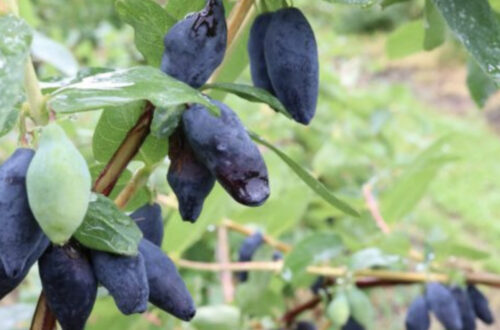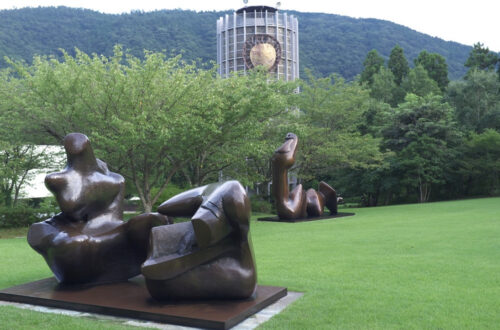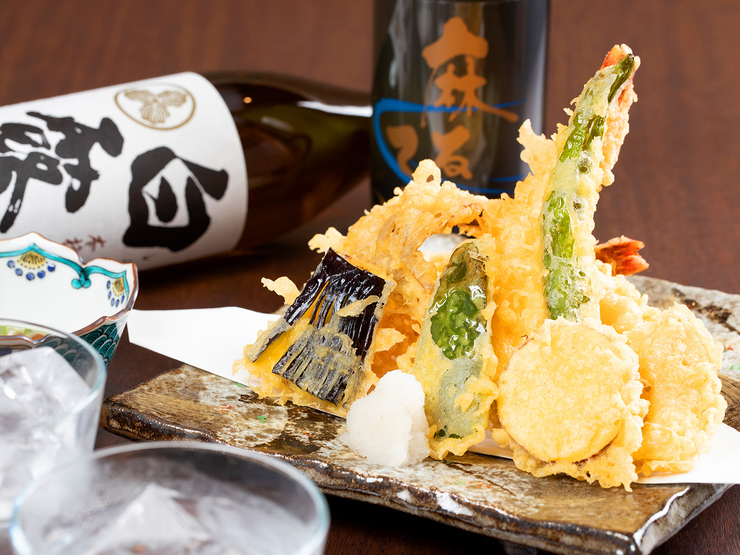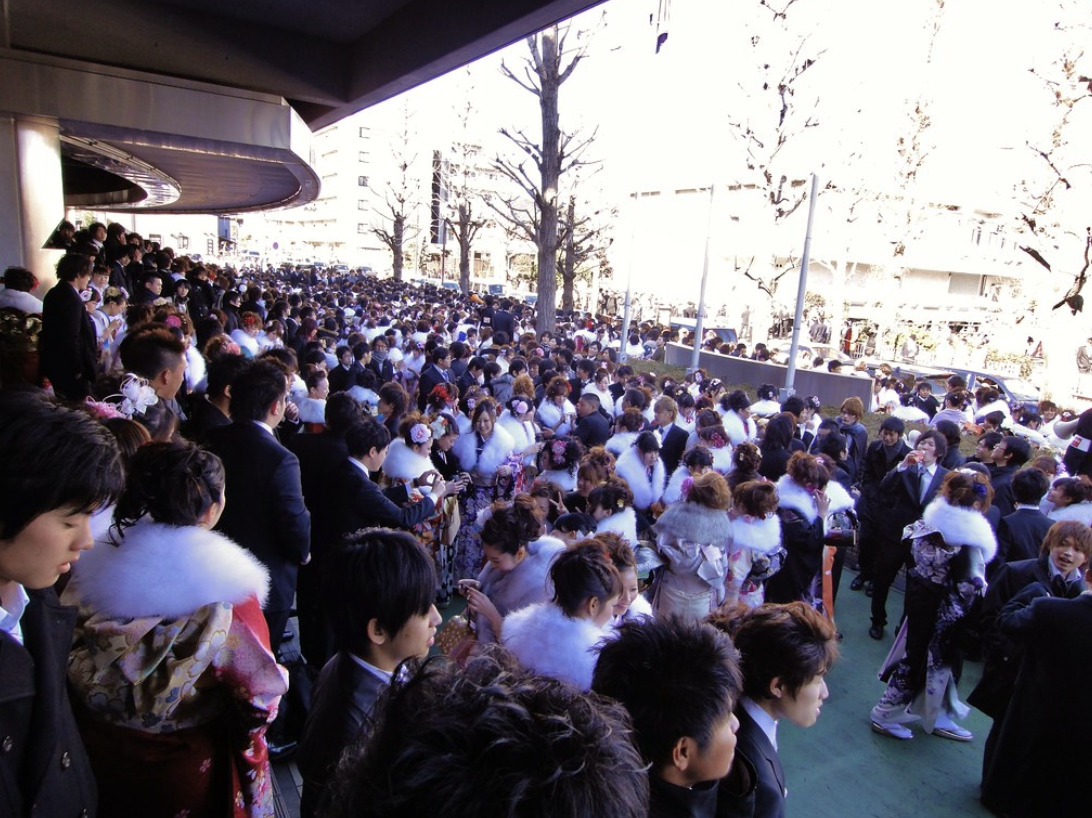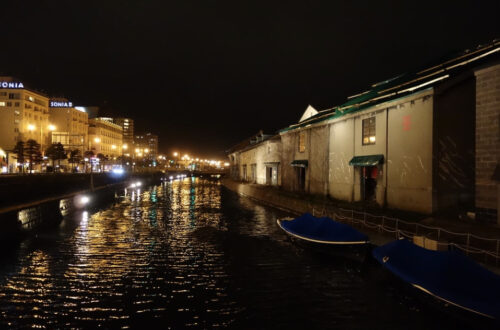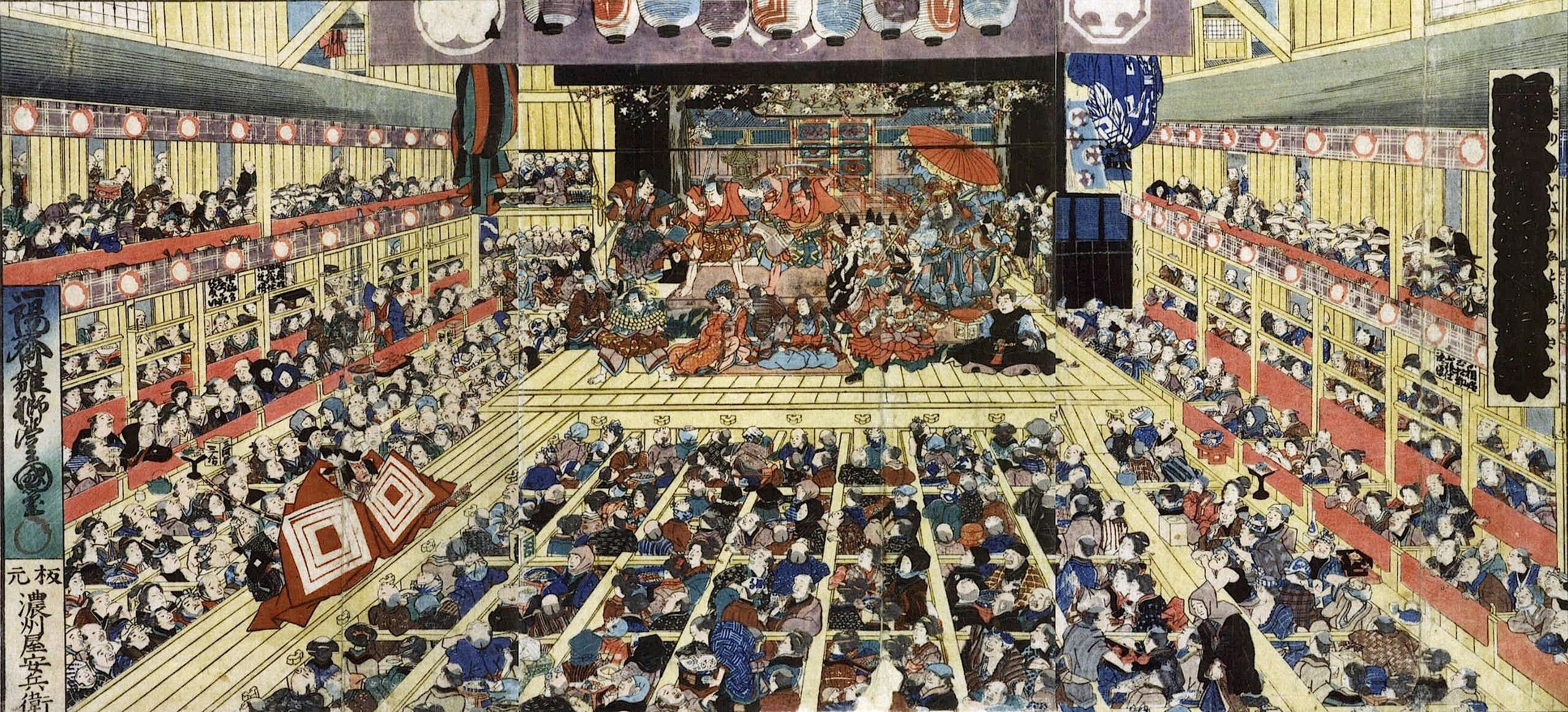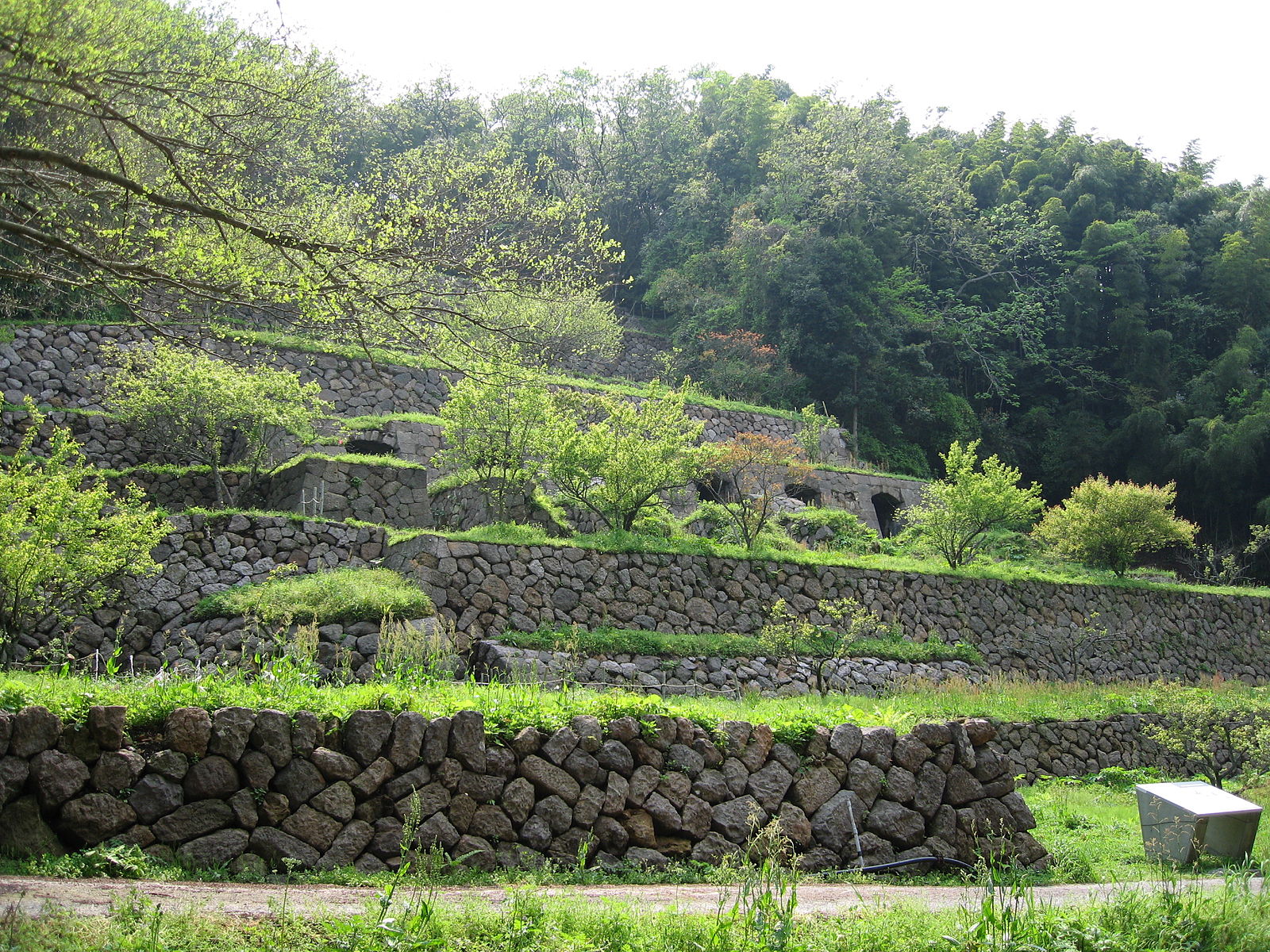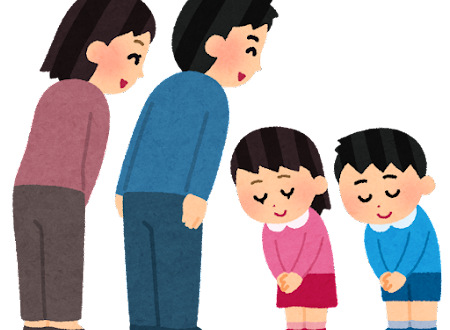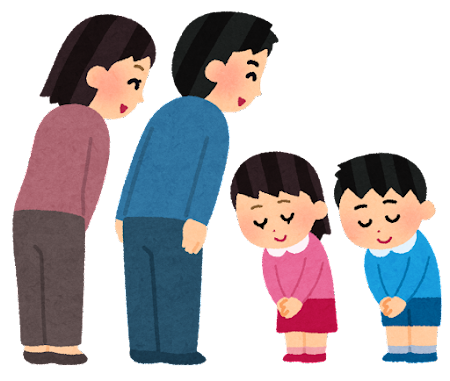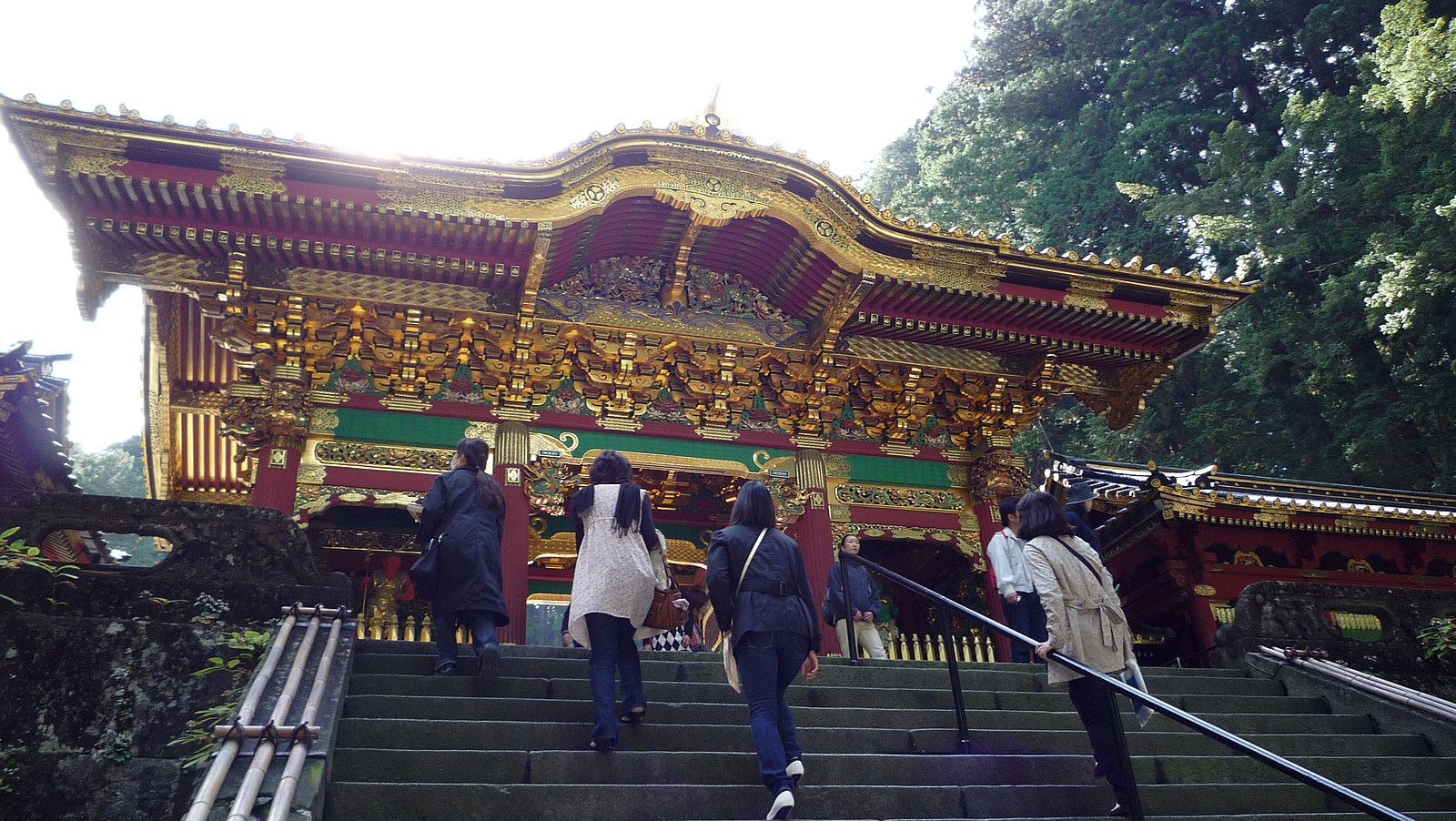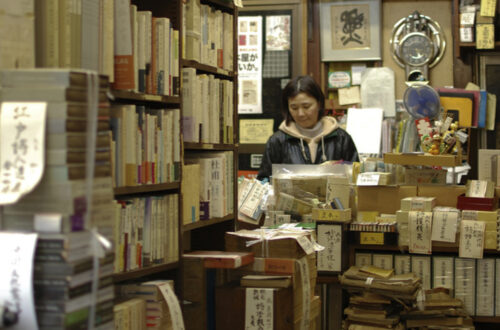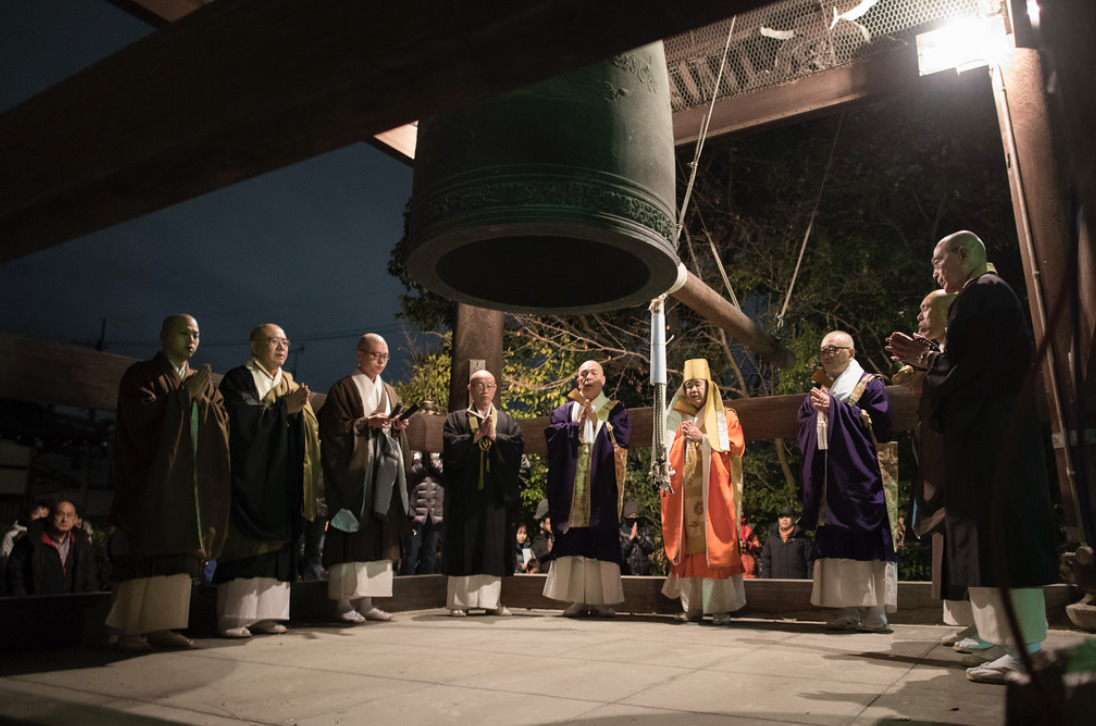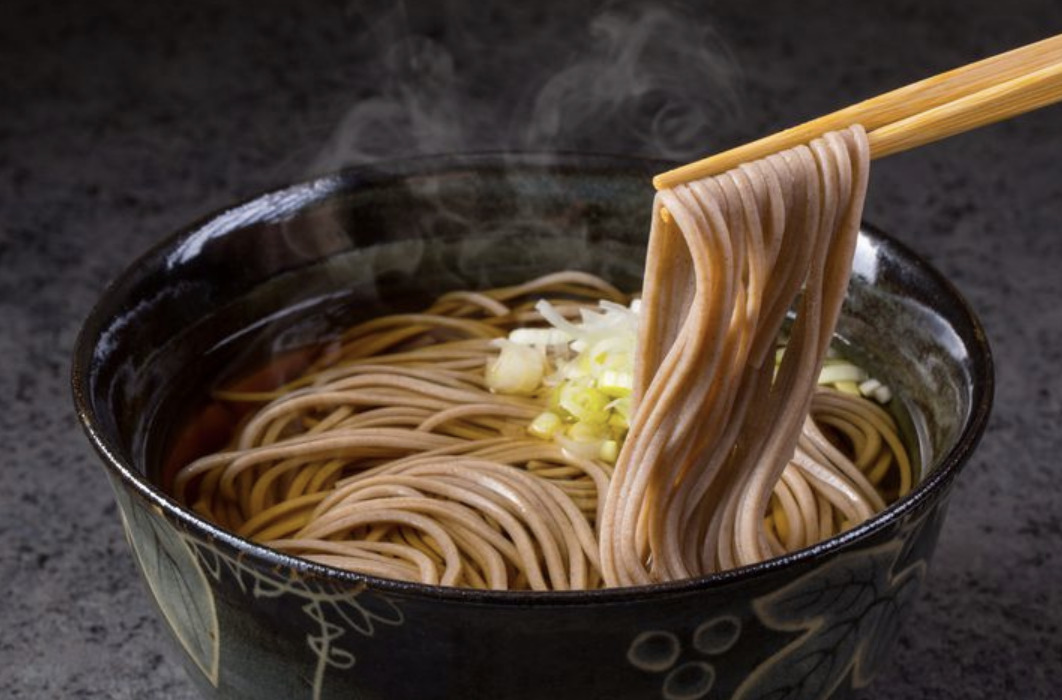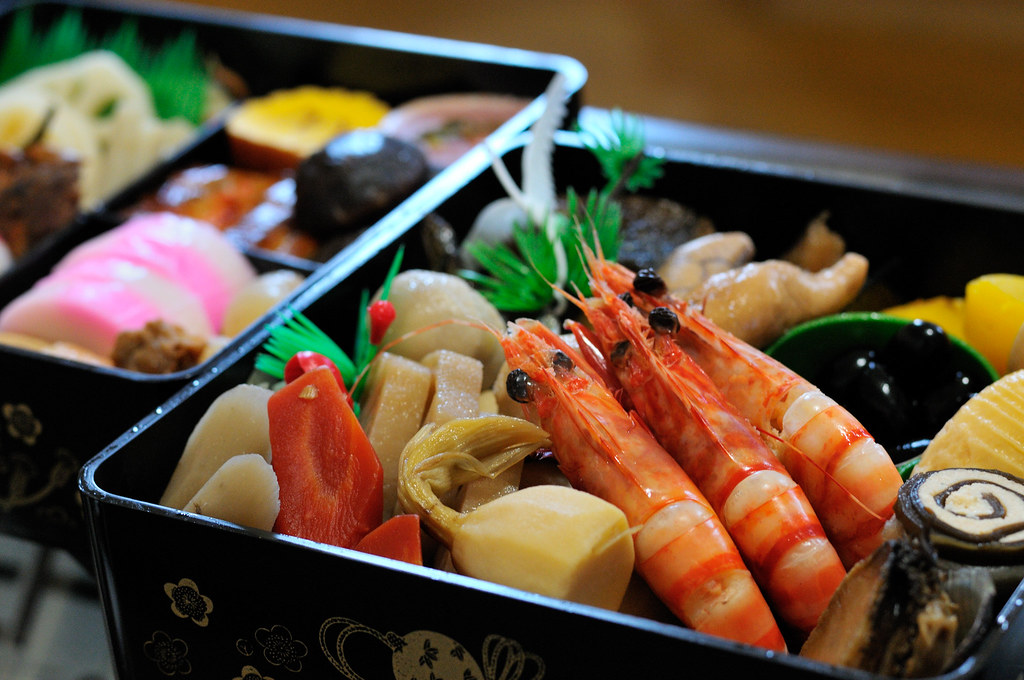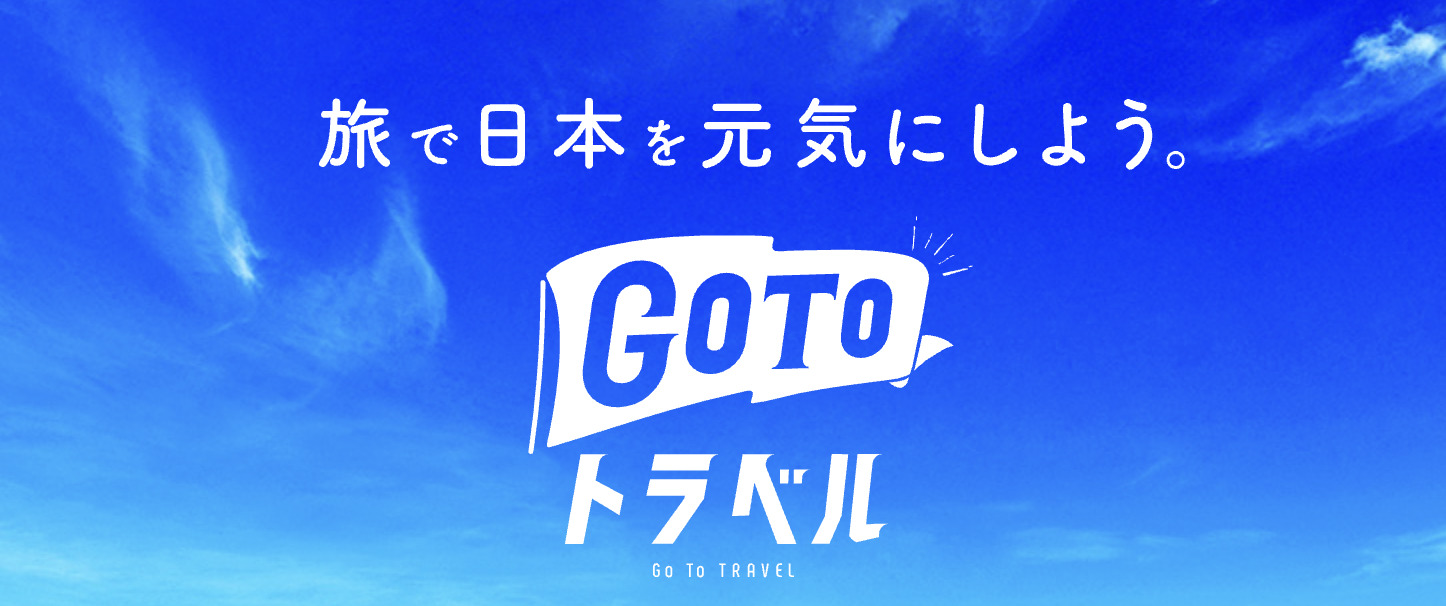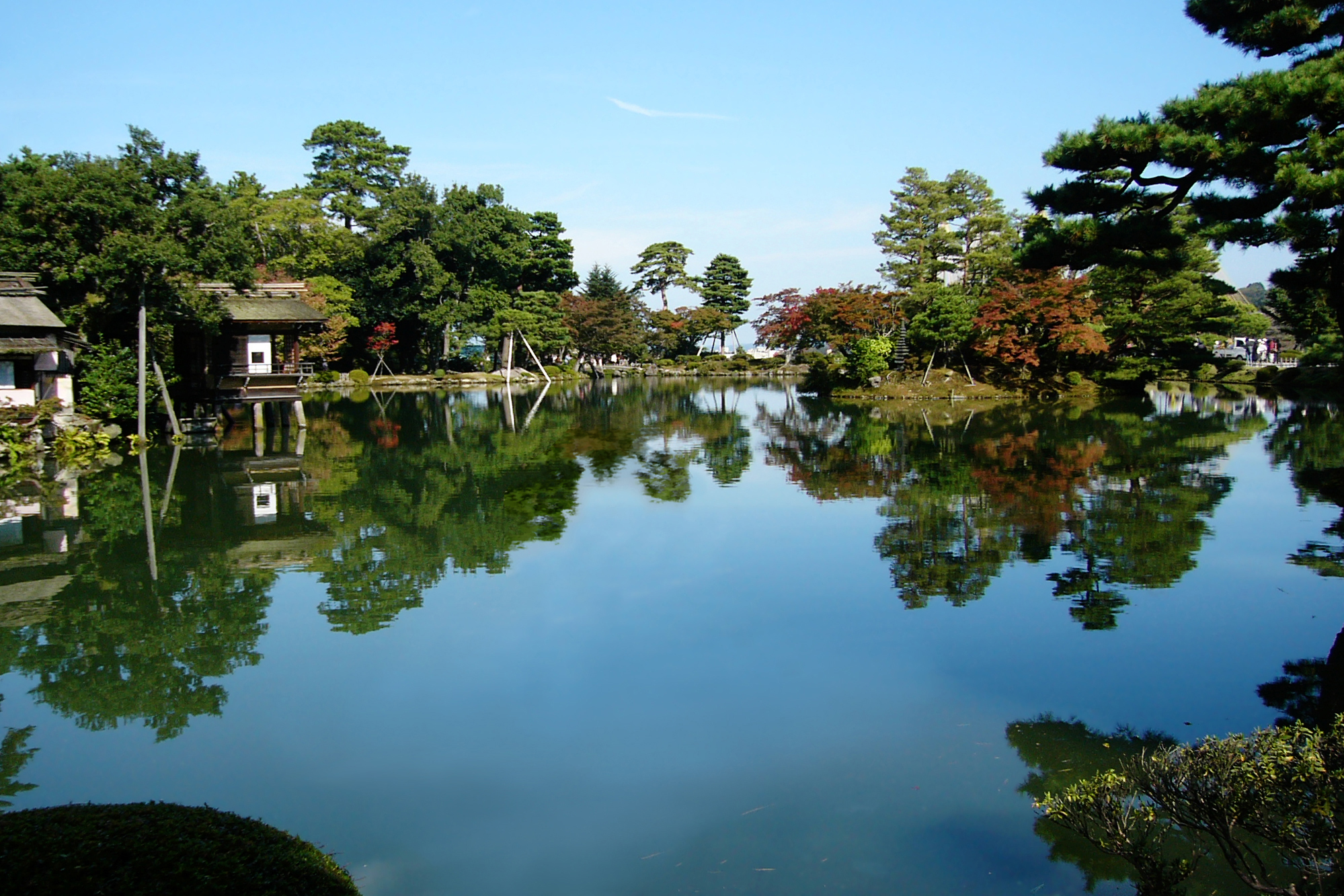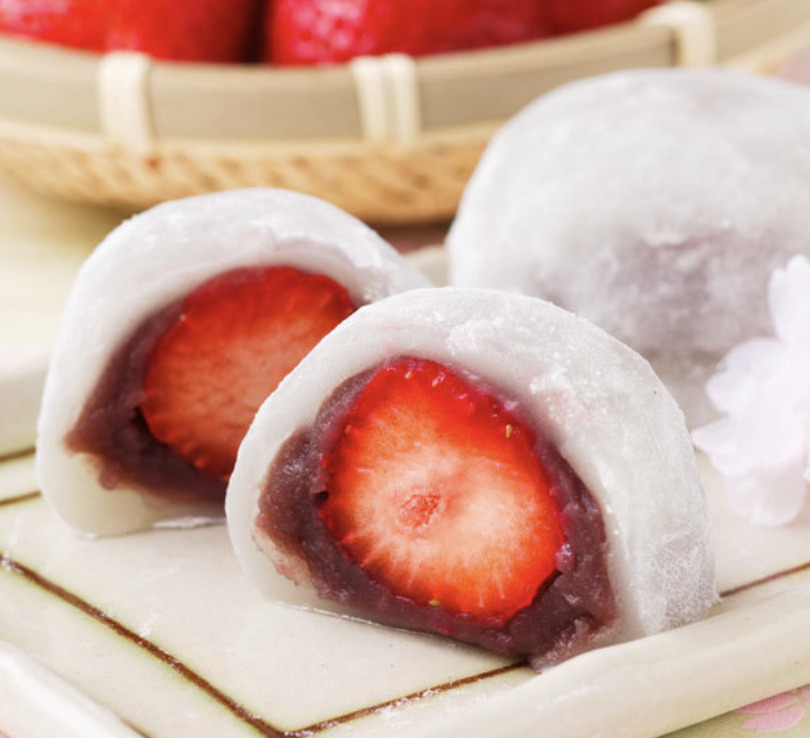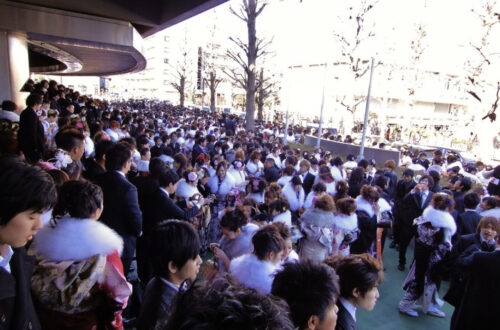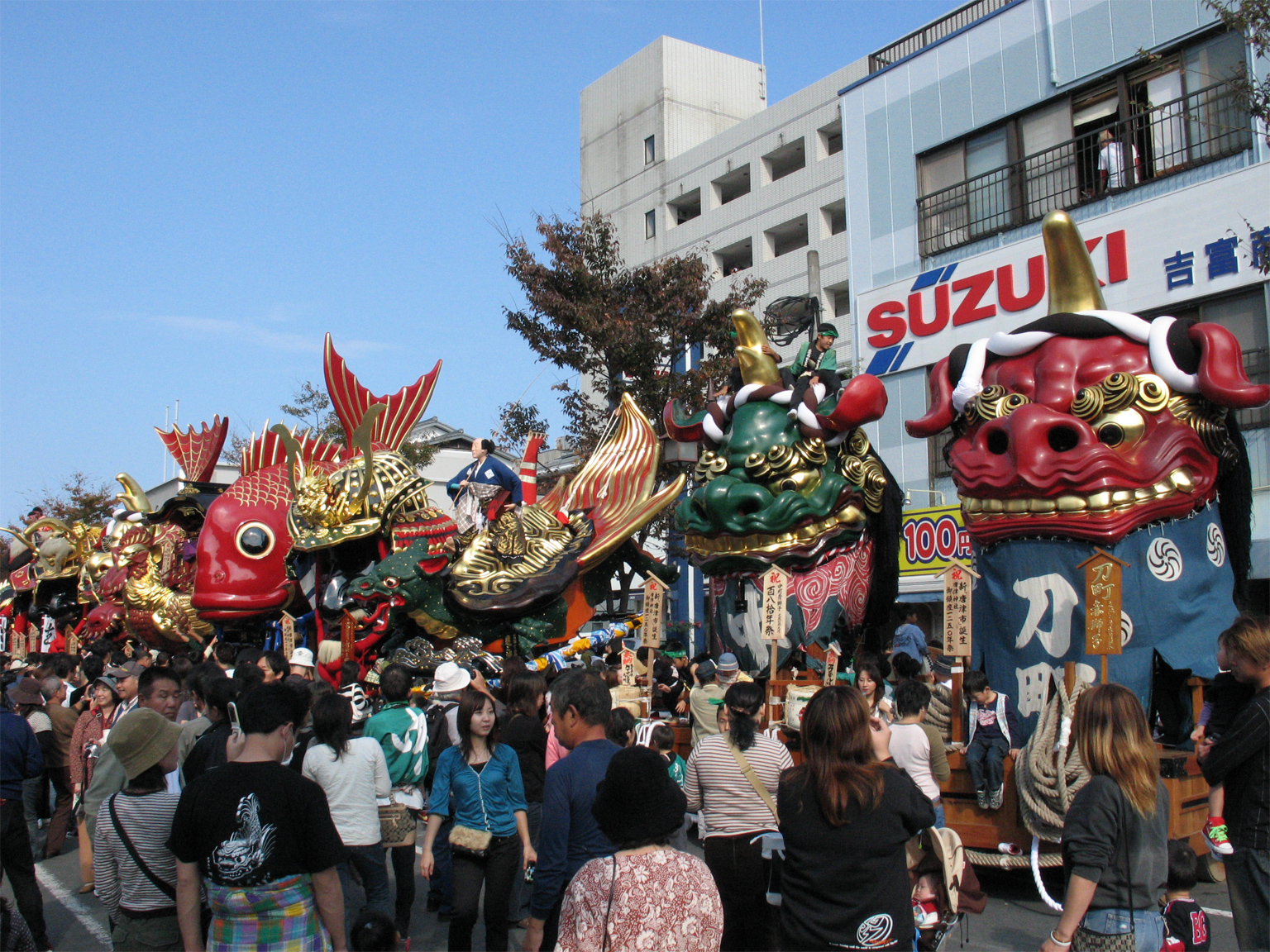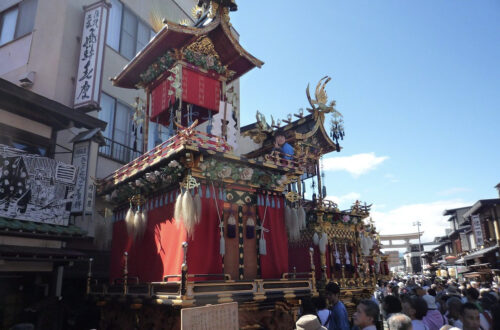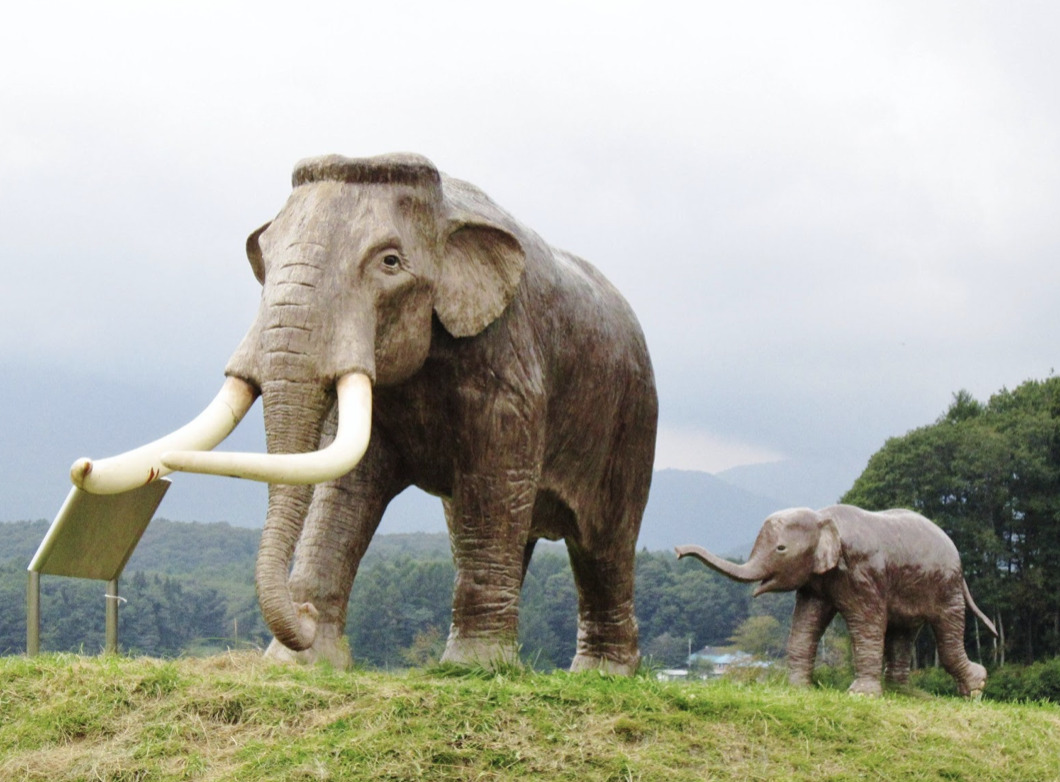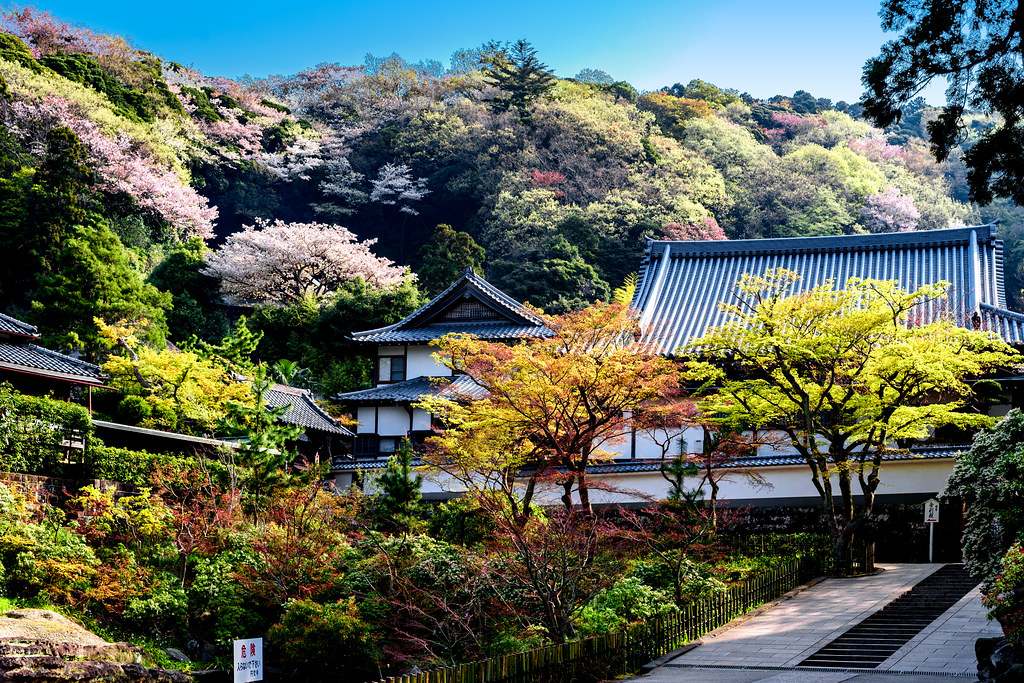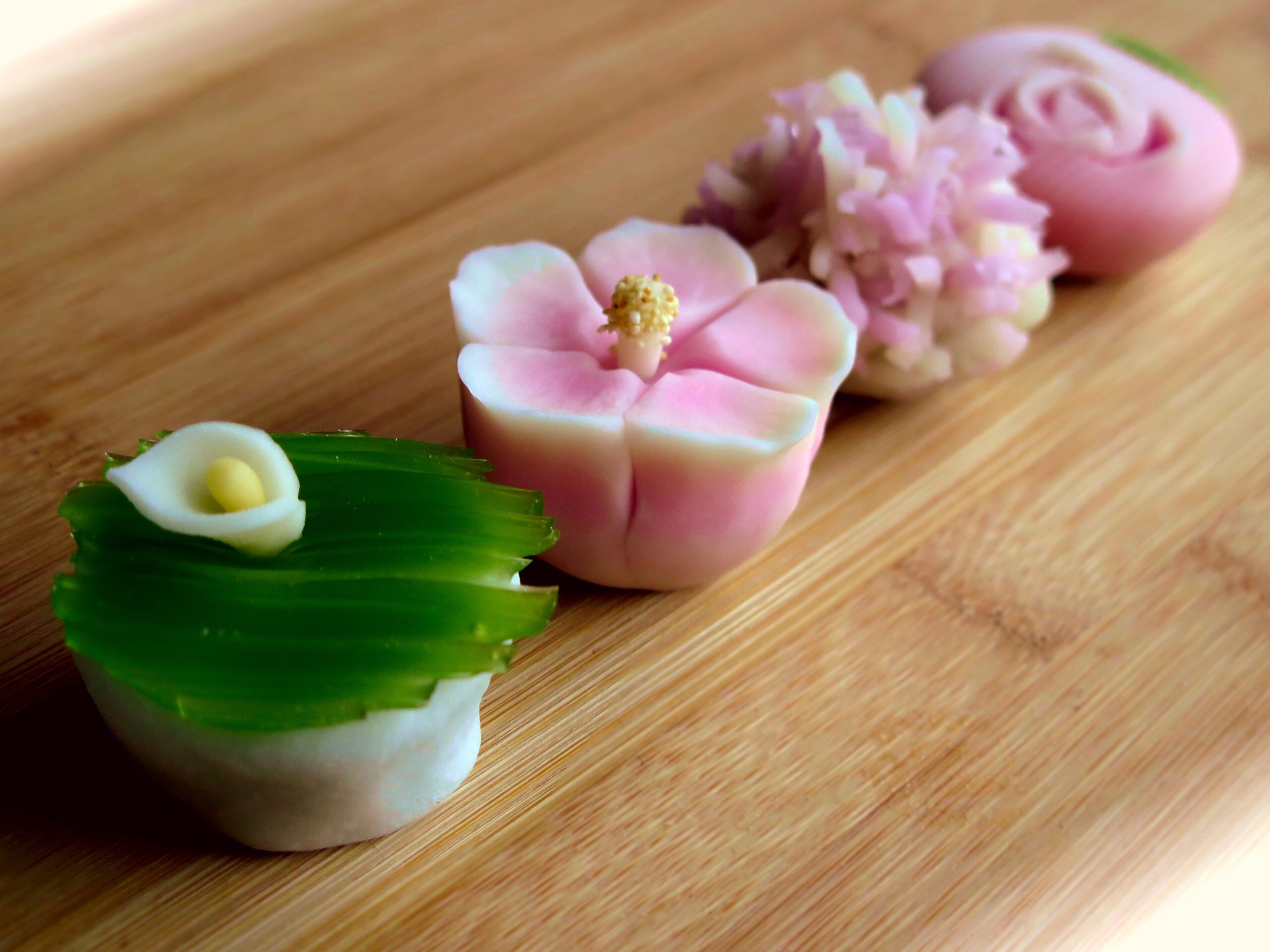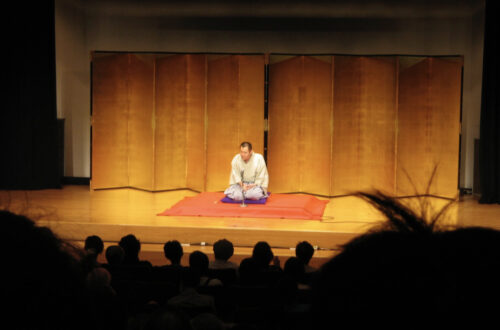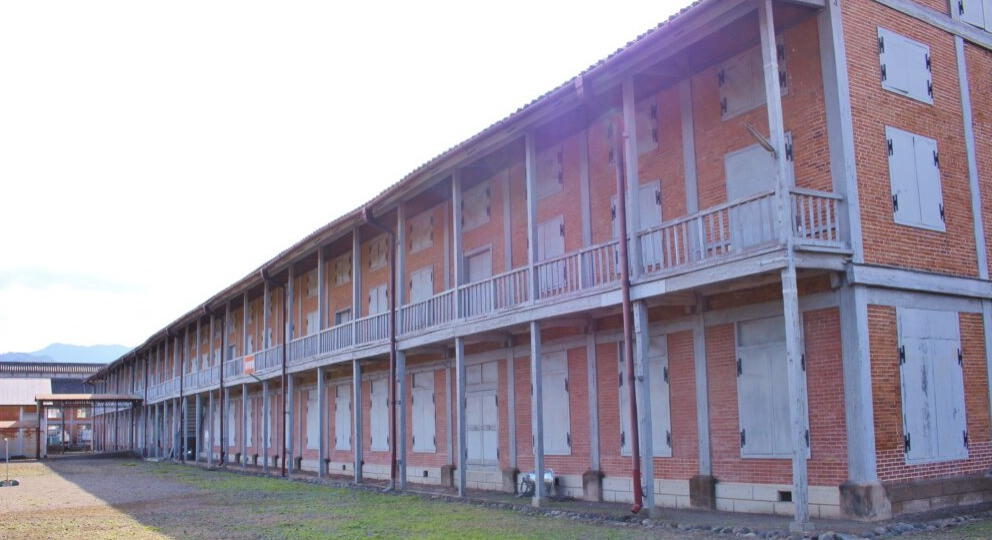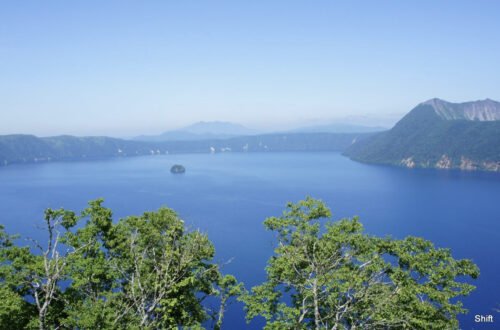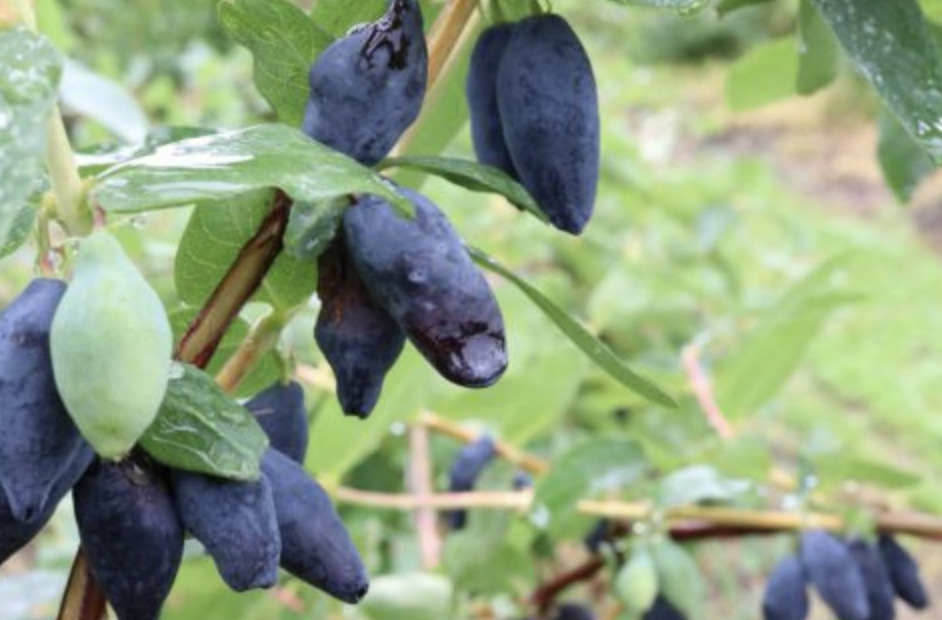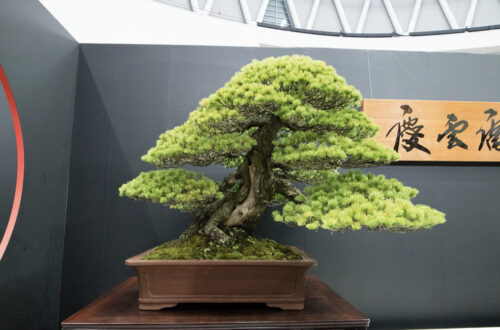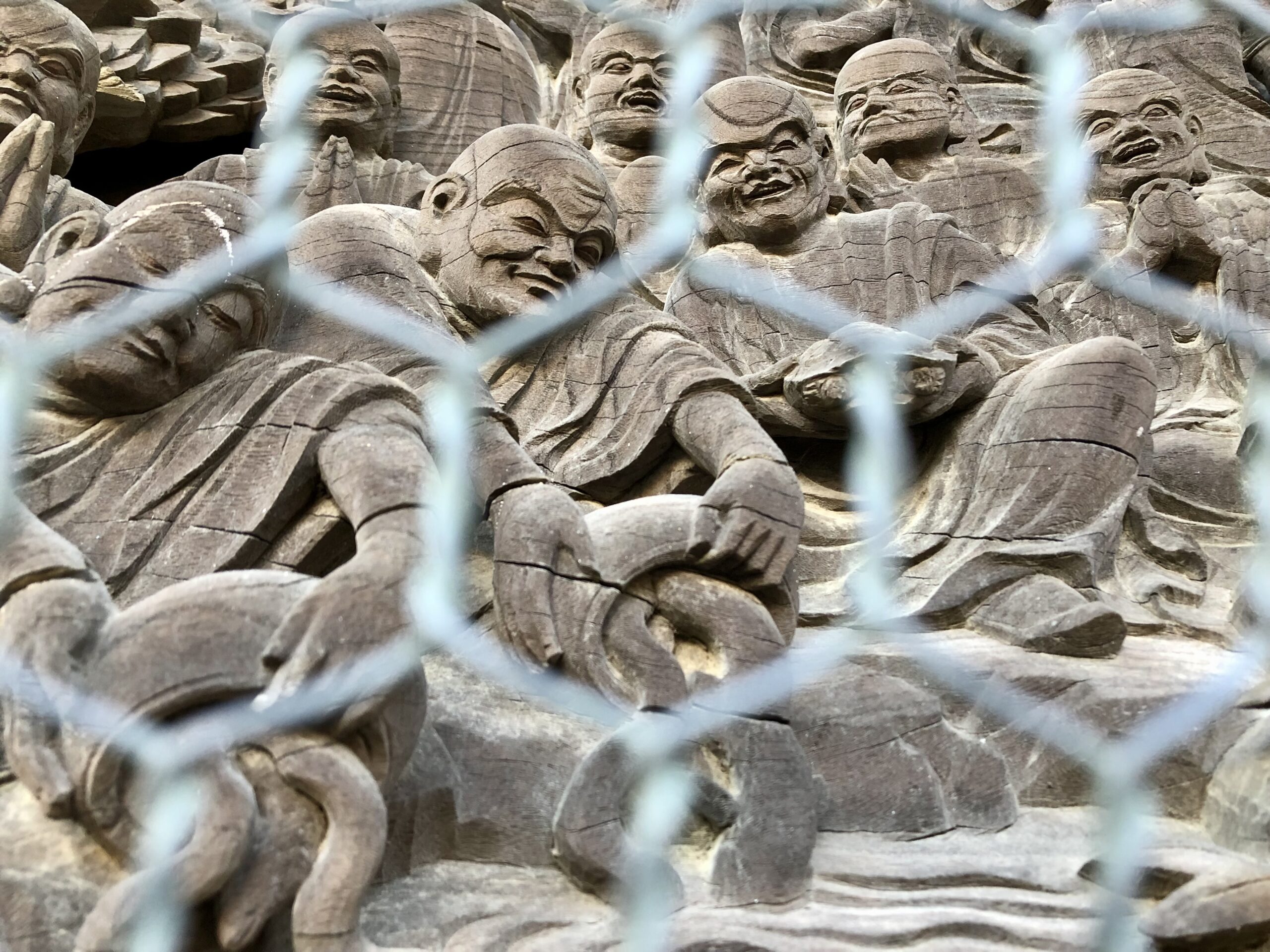-
Drift Ice part2 流氷その2
Hokkaido is the lowest latitude place in the world where drift ice can be seen. The three main areas where you can see drift ice are Monbetsu, Abashiri, and Shiretoko, where there are many tourist facilities and activities. When the drift ice arrives, various wild animals also start to show their faces. You can see seals and Steller’s sea lions with their cute round bodies and round eyes, as well as white-tailed sea eagles and Steller’s sea eagles, both of which are national natural treasures. The clione (a type of sea-slug) known as the “angel of drift ice,” is another animal that can only be seen here. 北海道は世界で最も低い緯度で流氷が見られる場所です。流氷を見ることができる地域は紋別、網走、知床の3ヶ所が基本で、観光施設やアクティビティが充実しています。流氷がやってくると、さまざまな野生動物たちも顔を見せ始めます。丸い体にクリっとした目がキュートなアザラシやトド、国の天然記念物であるオジロワシ、オオワシなどを見られることも。また「流氷の天使」と呼ばれるクリオネも、ここでしか出会えない動物です。
-
The Coming of Age Ceremony 成人式
The second Monday of January is a national holiday called “Coming-of-Age Day”. On this day, local public bodies across Japan hold a ceremony called Seijin-shiki, or the coming of age ceremony. It is an event to celebrate young people who will reach the age of 20 within the fiscal year. Each municipality invites the head of the municipality and their mentor to congratulate them and present them with a memento. 1月の第2月曜日は「成人の日」という国民の祝日です。この日、または前日の日曜日に日本各地の地方公共団体が「成人式」という行事を開催します。成人式とは、年度内に満20歳となる若者を祝福する行事です。各自治体は、首長や恩師を招いて祝の言葉や記念品を贈ります。 国民の祝日に関する英語 国民の祝日は「国民の祝日に関する法律」で定められており、現在、年間16日あります。 月日 祝日 英語 1月1日 元旦 New Year’s Day 1月第2月曜日 成人の日 Coming-of-age Day 2月11日 建国記念の日 National Foundation Day 春分日 春分の日 Vernal Equinox Day 4月29日 昭和の日 Showa Day 5月3日 憲法記念日 Constitution Memorial Day 5月4日 みどりの日 Greenery Day 5月5日 こどもの日…
-
Drift Ice 流氷
Drift ice, a typical feature of Hokkaido. During February and March, the Sea of Okhotsk is filled with a fantastical silver world of drift ice. Drift ice is a mass of ice floating on the surface of the sea. The drift ice seen in Hokkaido is formed along the Siberian coast in the northwestern part of the Sea of Okhotsk, and moves southward with the monsoon and ocean currents from Siberia, arriving at the coast of the Sea of Okhotsk in Hokkaido. Fishing is no longer possible for humans when there is drift ice, but the ice floes stir up the entire ocean, pushing up nutrients from the sea floor.…
-
Bowing お辞儀
It is said that Japanese people started bowing around 500-800 years ago when Buddhism was introduced from China. In those days, bowing was a sign of status. For example, those who welcomed people of higher status would bow low to show that they were not a threat to them. Such scenes are often seen in historical movies and plays. In modern Japan, bowing is used in a variety of ways. It is a social skill that all Japanese people, from children to adults, must learn, as it is used to express gratitude, requests, congratulations, and apologies to others. 日本人がお辞儀をするようになったのは、中国から仏教が伝わった500-800年頃だといわれている。当時のお辞儀は身分の上下を表していた。たとえば身分の高い人々を迎える側は、自分が相手にとって脅威でないことを示すために、体位を低くして見せたという。こうした光景は、歴史ものの映画や演劇によく見られる。現代の日本では、お辞儀はさまざまな使われ方をされる。他人への感謝や依頼、祝辞、謝罪などの意味が込められているお辞儀は、子どもから大人まで日本人にとって必ず身につけるべき社会的素養とされている。
-
Netflixで英会話練習 Language Reactor
Netflixのドラマや映画を楽しんでいます。素晴らしい作品と出会うたびに字幕無しでもっと集中して作品に没頭してみたいと思います。でもこれがなかなか難しい。 作品自体は多くの視聴者を楽しませることを想定してつくられているので、基本的に誰にでも分かりやすく進行しているはずです。 理解を阻害しているのは、会話で使われる表現(話し言葉)と音、そしてスピードだと思います。本や記事なら自分のペースで調べながら読めるのですが、会話は相手があることなのでそうはいきません。私は日本語の会話でものんびりな方なので英語だとなおさらついていけません。 会話は身体的な能力なので(と思っています)、運動が苦手な私は自分にできる範囲で無理なく練習をすることが大切と思います。英会話は筋トレ!(違う?) さて、Netflixで英会話の筋トレをするのに最適な拡張機能があります。Language Reactor です。現在のところGoogle Chromeで使用することができます(FIREFOX と EDGE 版も準備中のようです)。ちなみにお金はかかりません。 Language Reactor をGoogle Chromeの拡張機能に追加します。 Language Reactor を追加してNetflixを見るとこのようになります。 右側のウィンドウには英語の字幕が全部出ます。繰り返し聴きたいところはクリックして何度も聴けます。字幕をスクロールして聴きたいところをすぐに探すこともできます。とても便利! さらに便利なのは「AP」をオンにしておくことで、字幕ごとに自動的に止まってくれることです。ひとつひとつ丁寧に確認したい時に重宝します。 再生スピードなど細かい設定もできます。 このような技術とサービスが利用できるなんて良い時代になったと思います。映画1本をまるまる見ると時間がかかるので、1話の短いシットコムがおすすめです。FRIENDSやTHE BIGBAN THEORY、HOW I MET YOUR MOTHER などのコメディは1話が20数分程度ですし、気の利いた表現を学べます。 YouTubeでも多くの方が Language Reactor の紹介動画を投稿しているので興味のある方はご覧ください。
-
Temple Bell on New Year’s Eve 除夜の鐘
On the night of New Year’s Eve, Buddhist temples ring the New Year’s bell. According to the teachings of Buddhism, human beings have 108 vexations. In order to purge these vexations and welcome the New Year with a pure heart, the bells are rung from around 11:45 pm on New Year’s Eve to the New Year. At famous temples around the country, such as Hase Temple in Kamakura City and Shinshoji Temple in Narita City, there is a rush of people wishing to ring the bell, and numbered tickets are given out. 大晦日の夜、仏教寺院では除夜の鐘をつきます。仏教の教えでは、人間には108の煩悩があります。その煩悩を祓い、清い気持ちで新年を迎えるために、大晦日の夜11時45分ころから新年にかけて鐘をつきます。鎌倉市の長谷寺や成田市の新勝寺など、各地の有名なお寺では、鐘をつくための希望者が殺到し、整理券が配られます。
-
ワクチン Vaccine
Merriam-Websterによるword of the year 2021は「Vaccine」でした。 Merriam-Websterによると「vaccine」の語源は、ラテン語で cow(牛)を表す「vacca」。これは small pox(天然痘)に対する予防接種としてcow pox(牛痘)が使用されたことに由来します。 この牛痘接種法は、18世紀末にイギリスのエドワード・ジェンナーが開発し、日本にも19世紀半ばには輸入され、大阪適塾の緒方洪庵とその門下生たちが全国に広めたことが知られています。 新型コロナウィルス感染症に対してもワクチンの開発が急ピッチで進められてきました。 しかし、このワクチンはメッセンジャーRNA(mRNA)というgenetic material(遺伝物質)を人体に投与するワクチンであるということで、ワクチン投与に不安を感じている人も多いです。厚生労働省では新型コロナワクチンに対する不安を解消するためのPRを行っています。 World Health Organization(世界保健機関)のサイトを見ると、12月29日時点で44億6千200万人以上の人が「少なくとも1回以上接種を行った」とされています。 累積感染者数は約2億8千2百万人、死者は540万人を超えています。アフリカ大陸のほぼ全域と西アジアの一部などはワクチン接種があまり進んでいない様子がよく分かります。唯一(?)北朝鮮がデータ無しなのが怖いですね。 The word of the year 2021 by Merriam-Webster was “Vaccine”. According to Merriam-Webster, the word “vaccine” comes from the Latin word “vacca,” which means cow because cow pox was used as an inoculation against small pox. This method of cowpox inoculation was developed by Edward Jenner in England at the end of the 18th century, imported to Japan in the mid-19th century, and spread nationwide by Ogata Koan and his students at Osaka Tekijuku. The development of vaccines against new coronavirus infections has been proceeding at a rapid pace. However, many people…
-
I wish you a healthy and happy new year 2022!
Last year was a year of many challenges for me in terms of the National Guide Interpreter Examination and my work. I’m going to work hard again this year! Here is the New Year Message from Their Majesties the Emperor and Empress.
-
Toshikoshi-Soba, or Soba noodles eaten on New Year’s Eve 年越しそば
The custom of eating soba on New Year’s Eve is said to have started around the middle of the Edo period. Soba, which has been grown as a relief crop since ancient times, is made long and thin, and is considered to be a food of good luck in the sense that it extends the life span and family fortune. Soba is also easy to cut, so it has a meaning of welcoming the New Year by cutting off the hardships and misfortunes of the year once and for all. Soba is sometimes served cold with a dipping sauce, and sometimes as a noodle soup in hot broth. 大晦日にそばを食べる習慣は江戸時代中期ころから始まったと言われています。古くから救荒作物として育てられてきたそばは、細く長く伸びるので、寿命を伸ばし家運を伸ばすという意味で縁起の良い食べ物と考えられています。また、そばは切れやすいので、一年の苦労や災厄をきっぱりと断ち切って新年を迎えるという意味もあります。そばは、たれとともに冷たくして出されることもあれば、熱いだしに入れて麺スープとして出されることもあります。
-
Daifuku-mochi 大福餅
Daifuku is a kind of Japanese confectionery made by wrapping red bean paste in a layer of mochi ( rice cake), also called daifuku mochi. The origin of Daifuku is believed to be quail mochi, which was born in the early Edo period (1603-1867). Today, there are many variations of Daifuku, such as Mame Daifuku with red pea or soybeans mixed into the mochi, Yomogi Mochi with a skin made of mochi with mugwort, Shio Daifuku with a salty skin and red bean paste, and Ichigo Daifuku with strawberries in the red bean paste. 大福は小豆でできた餡を餅で包んだ和菓子の一種のことで、大福餅とも呼ばれる。江戸時代初期に生まれたうずら餅が起源とされ、現在では、餅に赤豌豆や大豆を混ぜ込んだ豆大福、ヨモギを入れてついた餅を皮にしたよもぎ餅、皮や餡が塩味の塩大福、小豆餡の中にイチゴを入れたいちご大福など、さまざまなバリエーションがあり、人気の和菓子となっている。
-
Kohaku Utagassen 紅白歌合戦
Kohaku Uta Gassen is a special music program broadcast by NHK (Nippon Hoso Kyokai : Japan Broadcasting Corporation) on New Year’s Eve every year. It is popularly/commonly known as “Kohaku“. The female artists are divided into the “red group” and the male artists into the “white group,” and they perform in a rivalry format. Since many of Japan’s most popular singers appear on the program, it records high viewer ratings every year despite its late-night schedule, and for many Japanese, it has become a symbol of/for the end of the year. 紅白歌合戦とは、NHK(日本放送協会)が毎年大晦日に放送する男女対抗形式の音楽特別番組である。人々の間では「紅白」と呼ばれ親しまれている。女性アーティストを紅組、男性アーティストを白組に分け、対抗形式で歌や演奏を披露する。日本を代表する人気歌手が大勢出演するため、深夜に及ぶ時間帯でありながら、毎年高視聴率を記録し、多くの日本人にとっては、一年の締めくくりの象徴ともいえる番組となっている。 *語句 大晦日 New Year’s Eve 視聴率 viewer ratings
-
The Lake Nojiri 野尻湖
During the Paleolithic Age, people ate large animals such as Naumann elephant and the bighorn deer. From the lake Nojiri, which is situated in the northern Nagano Prefecture, many bones of Naumann elephants and bighorn deers were found, so the lake Nojiri is thought to be the place that people of the Paleolithic Age hunted. 旧石器時代、人々の食料となったのはナウマンゾウやオオツノジカのような大型動物でした。長野県北部の野尻湖からは5万年〜3万年前のナウマンゾウやオオツノジカの骨が数多く発見されています。こうした出土品から、野尻湖は旧石器時代の人々が狩りをした場所だと考えられています。
-
The Paleolithic Age 旧石器時代
The Paleolithic Age was colder than today, and the earth was in the cold period called the Ice Age. At that time, the Japanese Archipelago was connected to the continent. The sea water was reduced due to the glaciers, and the water surface was more than 100m lower than today. The average temperature was also more than 7 degrees Celsius lower than today, and the climate in Japan is thought to be like that of Siberia today. 旧石器時代は今よりも寒く、地球は氷河時代と呼ばれる寒冷な時代でした。その頃、日本列島は大陸と陸続きでした。氷河のため海水が減り、現在よりも水面が100m以上下がっていたのです。平均気温は今よりも7℃以上低く、日本は現在のシベリアと同じような気候だったと考えられています。
-
The Tomioka Silk Mill and the Silk Industrial Heritage Complex 富岡製糸場と絹産業遺産群
The Tomioka Silk Mill and the Silk Industrial Heritage Complex are a collection that shows the technological exchanges and innovations that contributed to the realization of mass production of high-quality raw silk from the late 19th to the 20th century, when the world economy was integrated through trade. The result was the development of the global silk industry, and the popularization of silk consumption. This technological innovation was achieved through a combination of innovations in silk manufacturing technology and innovations in sericultural technology that supported the increased production of high-quality cocoons, the raw material for silk. This property is a remarkable example of the entire process of raw silk production…
-
Haskap ハスカップ
In Atsuma, Japan’s largest town of Haskap, you can enjoy picking Haskap at tourist farms. The taste of Haskap differs from farm to farm and from tree to tree. You can find your favorite tree by tasting the sweet, sour, and bitter taste. Haskap trees can only be harvested for two to three weeks in late June and early July of the year. Fans come from all over the country to enjoy the very short harvesting season of Haskap. The shrubby Haskap is also popular with families as even small children can enjoy harvesting it. 日本一のハスカップのまち厚真町では、観光農園でハスカップ狩りを楽しむことができます。農園によって、木によって味の違うハスカップ。甘い、酸っぱい、渋いなど、味見をしながらお好みの木を見つけましょう。収穫できるのは1年のうち、6月下旬から7月上旬のたったの2~3週間です。収穫時期が非常に短いハスカップを求めて、全国からファンが訪れます。低木のハスカップは小さな子どもでも収穫を楽しむことができるので家族連れにも人気です。



